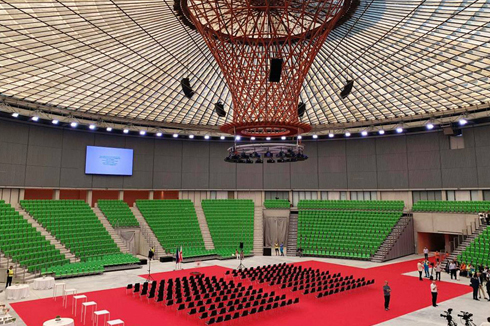
Renzo Piano
Renzo Piano Building Workshop
Renzo Piano was born in Genoa in 1937. After graduating from the Politecnico di Milano in 1964, he began working with Franco Albini and later moved to London, where he collaborated with the renowned engineer Peter Rice. His encounter with Richard Rogers marked a turning point: together, they won the 1971 competition for the Centre Pompidou in Paris, a revolutionary building that exposed its structural and technical systems on the outside, transforming the museum into an open, lively public space.
Following the international success of the Centre Pompidou, Piano continued to experiment with lightweight materials, innovative technologies, and a constant focus on the human dimension of architecture. Among his most celebrated works are the Menil Collection in Houston, Kansai International Airport in Osaka, the Beyeler Foundation Museum near Basel, the Auditorium Parco della Musica in Rome, The Shard in London, and the new Columbia University campus in New York.
In 1981, he founded the Renzo Piano Building Workshop (RPBW), with offices in Genoa, Paris, and New York. The studio operates as an open workshop, where architects, engineers, and craftsmen work closely together, embodying a multidisciplinary and collective approach. The studio’s philosophy centers on sustainability, structural lightness, respect for context, and care for the people who will use the spaces.
In 1998, Piano received the prestigious Pritzker Prize, the highest honor in architecture, recognizing his ability to combine technology, art, and human sensitivity. In the following years, Piano was also appointed a lifetime senator in Italy, confirming the cultural and social impact of his work.
The Renzo Piano Building Workshop has completed projects all over the world, from California to Australia, helping to redefine the relationship between architecture and the environment. Each project is conceived as a unique work, the result of research and a deep dialogue with the site and community.
Today, Renzo Piano is still considered one of the masters of contemporary architecture, a symbol of poetic, innovative, and deeply human design that transforms space into experience and connection.
Projects

